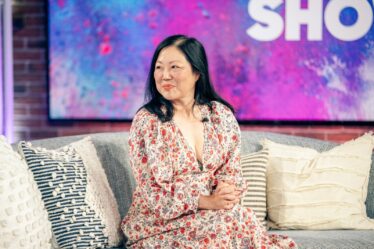
Two years ago, Lululemon asked Akilah Cadet, an executive coach and diversity consultant for companies like Google and beverage maker Vita Coco, if she would consider a job as the brand’s head of diversity and inclusion.
Without hesitation, she said “No, thank you.”
In Cadet’s opinion, Lululemon “wasn’t ready for a behaviour change” — nor were many of the other companies that scrambled to hire diversity leaders following the summer 2020 social justice protests.
In October 2020, Lululemon hired Stacia Jones, former chief diversity and inclusion officer at Abercrombie & Fitch as its global head of inclusion, diversity, equity and action, reporting directly to the company’s CEO. In a statement, Lululemon said it’s “built momentum quickly and made significant progress” since hiring Jones, who was tapped to help implement a wider DEI strategy “to increase representation throughout our organization and reflect the communities that we operate within.”
In the months after George Floyd’s murder, at least 60 public companies appointed their first-ever diversity leader, a study by executive search firm Russell Reynolds Associates found. In fashion, LVMH, Calvin Klein and Tommy Hilfiger parent PVH Corp., and Vans and The North Face owner VF Corp., were among the companies that announced new executive DEI roles.
But the position — which may use other names such as vice president of diversity or chief diversity and inclusion officer — has seen high turnover. The average tenure for a CDO is about three years, compared with six years for a CEO, according to LinkedIn. Last month, Nike lost its second DEI head in three years when Felicia Mayo, who previously held a similar role at Tesla, left the company after less than two years. (Jarvis Sam, Nike’s VP of diversity, equity and inclusion since July 2020, is taking on the newly created title of chief diversity, equity and inclusion officer in tandem with Mayo’s exit.) Gucci’s first global head of diversity, equity and inclusion Renée Tirado resigned in 2020 after one year.
The root of the problem, experts say, is that many companies hastily designed and staffed CDO roles in response to pressure from their employees and customers, as well as outside activists. The responsibilities and goals were often nebulous. At worst, CEOs and corporate boards prioritised quickly hiring an ethnically diverse internal candidate — who often ended up serving as more of a figurehead — over a more meticulous search for someone with the expertise and desire to thrive in the role.
“You have mostly these BIPOC women coming into these roles, they’re told a totally different story in the interview process that they’re going to have resources and their own team and a direct line to the CEO,” Cadet said. “Instead … they’re placed in HR, they never get resources, the company doesn’t educate other leaders on their importance … people don’t listen to them and … the [head of diversity] is then viewed as a problem.”
The consequences reach every corner of a company from the underrepresented employees whose interests these leaders should help champion to the executives who cycle through CDO roles, and find their careers stalled by a job that in many cases they did not even want in the first place.
Elevated or Relegated?
Senior DEI roles are relatively new to the corporate world, with the first wave of such hires coming about a decade ago, mainly in the technology and consumer packaged goods sectors.
For leaders whose professional experiences and skills are steeped in the DEI function, being appointed a CDO could be like arriving at “the holy grail,” said Ayana Parsons, a senior client partner and head of Board and CEO Inclusion at business consultancy Korn Ferry.
But, often, the job is delegated to ambitious managers and executives — who are often ethnically diverse — already overseeing essential business functions such as marketing and finance.
“It makes sense to have your diversity chief be a Black person or a person of colour, but if they do not have the skill set of change management or the ability to influence the C-suite and the board, then it’s not going to work,” said Kyle Rudy, a senior partner at executive recruiting firm Kirk Palmer Associates. “Their institutional knowledge and their knowledge of living in this [country with] systematic racism is not going to be enough to help them [be successful] and … they’ll become disillusioned.”
A stint as CDO may be positioned as a stepping stone to CEO or CFO. But it can in retrospect be seen as taking them off their desired path.
“I can think of two incredible Black women who were ‘voluntold’ to be [DEI leaders] after George Floyd’s murder,” Parsons said. “They were both in … leadership roles that set them on the ultimate path to being CEO. Both of them are trying to get back into these life goals … and they’re having trouble.”
An Evolving Framework
A significant challenge for many diversity leaders is that they’re expected to, on their own, make their companies more inclusive — a sweeping responsibility that requires “every lever that you have in the organisation to be pulled,” said Neela Seenandan, co-chief executive of executive recruiting firm Hanold Associates.
They may not be given enough resources to make a difference, and face opposition from other executives who aren’t invested in improving the culture and equity of their organisation.
Before hiring a CDO, companies should perform an internal DEI audit to understand the scope of their challenges, Parsons said.
The position should also report to the CEO, rather than serve as an extension of the human resources department, experts say. That would signal to others within the company that improving the thinking around DEI is a priority, a diversity chief at a major fashion company told BoF.
“Expectations are high, commitments are great but action at deeper levels of the organisation may be low,” said the executive. “Reporting to the CEO … would signal elevated importance and demand that action is taken.”
Gucci didn’t replace Tirado after she left. Instead, the brand’s DEI work is now handled by its Global Equity Board, a group chaired by CEO Marco Bizzarri and comprised of internal and external stakeholders, including model and activist Bethann Hardison and the activist and writer Sinéad Burk, and chaired by CEO Marco Bizzarri. (Gucci’s parent, Kering, promoted Tania Castillo Pérez to global head of diversity and inclusion in March, replacing Kalpana Bagamane Denzel, who held a similar role for over two years. The French luxury conglomerate has also appointed regional DEI chiefs).
“This shift from a single person in charge of DEI to an entire board … contributed on one side to achieve the maximum level of internal sponsorship and advice and on the other to have an agile way to align and transfer messages, values and opportunities across the company,” the company said.
Not every business needs a diversity chief. But companies should be careful not to signal that they view DEI work as undeserving of dedicated expertise or resources, Rudy said.
“The solution is not to divide the responsibility [of DEI] and spread it out amongst people across a company,” said Rudy. “It’s to take the one person who has that responsibility and elevate them to the peer level in the C-suite and give them funding and the team they need to make it effective.”
Ultimately, that will require companies to be committed for the long-term, said Parsons.
“It’s a hard role, but it’s no different than other leadership roles like chief sustainability officer or head of [environmental, social and governance],” she said. “But if we thought of the DEI office as a business line and we supported that and it was fully integrated … then I don’t think it would be as hard.”
Cadet continues to consult for Lululemon on projects, including an upcoming store opening in Oakland, Calif. and said that while she’s seen progress — and the brand’s willingness to employ her expertise for its brick-and-mortar introduction to a highly-diverse city is evidence of that — “there’s a lot of work that needs to be done.”



